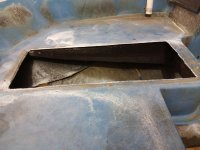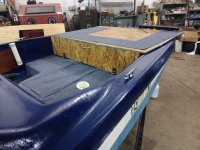The flex seal and raptor lining is a bad idea. It won't soak into the plywood and adhere well. Do it right - buy some polyester resin, coat every side of the wood in resin, then encapsulate the plywood in a layer of CSM. The materials aren't that expensive (I recommend shopping at US Composites). Save the flex seal and raptor lining for another non-boat project, or sell it, or just eat the cost. If you plan on keeping the boat as long as you say, future-you will be cussing current you when you're having to replace a soft floor again in a few years.
I think a lot of people try to initially avoid polyester because it's the fear of the unknown (not saying that's your case, but maybe?). It's really a very forgiving material, and I was afraid of working with it at first too. This is the right place to be to ask questions on how to use it. It's really a great material, and the right material to use.






























